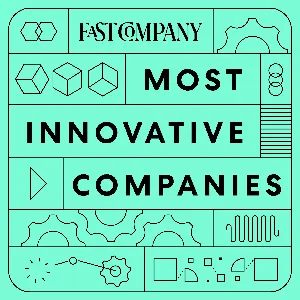Podcast Summary
The Future of Plastic Recycling: Breaking Down Strong Plastics for Reuse: New technologies could recycle up to 80% of plastic within the next decade, reducing the need for new plastic production from fossil fuels, but success depends on scalability and economic viability.
While individual efforts to recycle have been encouraged for decades, the production of plastic has continued to increase at an alarming rate. Currently, around 440 million tons of plastic are produced annually, with expectations of this number doubling by 2050. However, new technologies may offer a solution by breaking down strong, stable plastics into their component parts for reuse instead of creating new plastic from fossil fuels. This could potentially result in up to 80% of recycled plastics being reintroduced into the market within the next 10-20 years. Yet, the success of this approach hinges on its scalability and economic viability. If these challenges can be addressed, plastic recycling could finally live up to the promise made to 90s kids and help alleviate the plastic waste issue, rather than just being a green wash for continued plastic consumption.
Exploring new ways to recycle polyurethane: Researchers are using solvents to efficiently and cost-effectively recycle polyurethane, potentially creating a closed-loop system for this widely-used material.
Polyurethane, a versatile material used in various industries from furniture to automotive, presents unique challenges when it comes to recycling due to its strong and stable chemical bonds. Currently, most polyurethane ends up in landfills or is ground down into flakes and glued together for insulation. However, researchers like Dr. Stephan Fist Christensen from Arhus University in Denmark are exploring new ways to recycle polyurethane using solvents, such as Tert-Amel Alcohol, which could make the process more efficient and cost-effective. This could potentially extend the life cycle of polyurethane products and reduce waste. The potential of this breakthrough lies in the ability to deconstruct polyurethane materials, extract the monomers, and then reformulate them into new products, creating a closed-loop system for this widely-used material.
Chemically recycling polyurethane using recycled polyols: Researchers have developed a method to recycle polyurethane into monomers for new foam products, but it currently requires more energy and is not economically viable
A team of researchers has successfully developed a method to chemically recycle polyurethane, a common type of plastic used in various consumer products, using recycled polyols instead of virgin polyols derived from fossil fuels. This process involves breaking down the original polyurethane into monomers, which can then be reused to create new foam products. The researchers have tested this method on various materials, including household sponges, pillows, shoes, and insulation, with promising results. However, the process currently requires more energy than using metal catalysts and is not yet economically viable due to the high cost of monomers generated through this method compared to those obtained from fossil fuels. Nevertheless, industry experts are optimistic about the future of chemical recycling as the technology matures and becomes more economical, potentially leading to a significant reduction in the demand for virgin plastics.
Chemical recycling: A solution to plastic waste?: Chemical recycling can dissolve plastic's strong chemical bonds, leaving individual monomers intact, potentially leading to new types of easier-to-recycle plastics. Designing future plastics for easier breakdown could also be a viable solution.
The current recycling methods for plastics have limitations, particularly in breaking down the strong chemical bonds between monomers. Dr. Athena Anastasaki, a polymer chemist at the Swiss Federal Institute of Technology in Zurich, explains that these bonds make plastic useful but also difficult to recycle. Traditional recycling damages the plastic polymers, resulting in lower quality products. However, chemical recycling can dissolve the bonds between compounds, leaving the individual monomers intact. This process is challenging and expensive, but it could lead to the development of new types of plastics that are easier to recycle. Dr. Kato Niel, who studies the politics of waste and recycling at UC Berkeley, suggests that designing future plastics to be more easily broken down could be a more viable solution. The Quirkier Side of Life series on WSJ Special Access highlights the story of a CEO who walks barefoot and recalls the importance of reimagining and improving processes, much like the potential for innovations in plastic recycling.
Discovering a new way to recycle plastics: Researchers have found a method to recover 92% of starting materials from certain plastics, potentially replacing traditional plastics with sustainable alternatives, but cost remains a concern as virgin plastics are cheap.
A team of researchers, led by Dr. Anastasaki, has discovered a way to "unzip" certain plastics, allowing for the retrieval of up to 92% of their original starting materials. This process could potentially replace traditional plastics with more sustainable alternatives. However, the main concern is the cost, as virgin plastics are currently cheap to produce. The urgency to find solutions has increased due to China's decision to stop accepting plastic waste for recycling, leading to a shift from chemical recycling to advanced recycling. While there are concerns about companies continuing to produce new plastics, it is clear that multiple solutions will be necessary to effectively combat the plastic problem. This development is an important one to watch not only for plastics recycling but also for addressing climate change and assessing the definition of "renewable" in this context.
Chemical recycling of plastic waste: Challenges and Optimism: Despite inconsistency and challenges, large companies invest in chemical recycling for future feasibility, optimism for future plastics and better processes.
While chemical recycling of plastic waste is gaining traction with large companies investing in the technology, the heterogeneous nature of plastic and the inconsistency of the oil produced from it make the process challenging. Dr. Marco Castaldi, a chemical engineer, explains that not all plastics are suitable for chemical recycling, and the stream of plastic coming in and the oil coming out can be very inconsistent. However, he believes that with future plastics and better processes, it might become more feasible to recycle consumer goods. It's important to note that the practical application of the recycled plastic matters, as the plastic used in cars will likely be used to make new cars, while preserving food requires different considerations. Despite these challenges, Dr. Castaldi is optimistic that chemical recycling will become widespread in the future. The involvement of large companies like Dow Chemical, Shell, BASF, and ExxonMobil in this field is a significant step forward. However, it remains to be seen whether consumers are willing to pay extra for plastic products designed to be fully recycled. Let us know what you think. The Future of Everything is a production of The Wall Street Journal.






